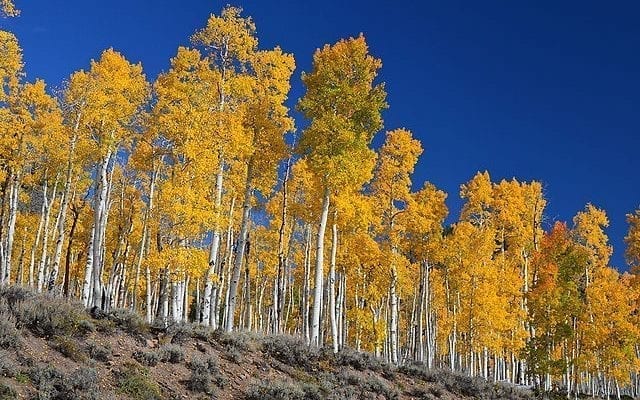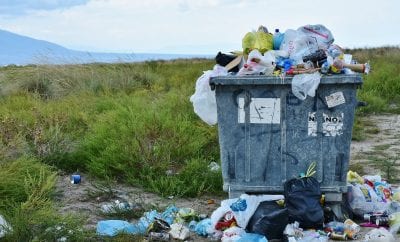
News
Scientists Say One of the Planet’s Oldest and Largest Organisms is Dying
According to researchers, one of the world’s largest and oldest organisms is dying. Named Pando, this organism is comprised of a massive grove of quaking aspens located in the Fishlake National forest in Utah.
Known for their bright yellow color and the quaking sound they make when wind passes through their leaves, aspens have the unique ability to produce identical offspring through their root systems. Due to this, they have the capability of colonizing massive swaths of land, and while they appear to be a sprawling forest, these trees all originate from a single, complex root system. Each time a root systems dies, a new, complete identical one is spouted to take its place, very much alike to the hair on your head.

Pando – Fishlake National Forest
In the Fishlake National Forest, this is exactly what Pando has done over the course of thousands of years. Over 47,000 aspens reside within the root system of Pando, all originating from a single parent aspen and sharing an identical genetic makeup. The grove covers over 106 acres, and is considered to be the largest living organism on Earth.
Unfortunately, Pando is dying. According to research publish in PLOS One, the forest is experiencing accelerated die-off and a diminished ability to regenerate root systems. The study places the blame on a increased population of herbivorous animals that take to grazing among Pando’s trees.
“While several human alterations to this forest have taken place in recent decades, it is the lack of simultaneous herbivore regulation that has caused this stand’s degeneration,” the study says. While solutions have been implemented for wildlife conservation, there is a balance to be struck between the protection of animals and forestry.
Paul Rodgers, author of study, told CNN, “We can no longer manage wildlife and forests separately. Typically, state governments regulate animals and the federal government regulates the forests or vegetation.”
Samples and photography cited in the study show that Pando’s root system began to thin out 40 to 50 years ago, which is around the time the popuLation of Elk and Deer began to grow in the area. Now, due to hunting regulations, these animals have been able to roam freely, overextending the rate of consumption over its ability to regenerate. The study also found increased human development, compounded with new campgrounds, roads, power lines, and cabins built within the grounds have caused the forest to shrink over the past 50 years.
A key aspect of Pando is its ability to support an entire ecosystem, a characteristic aspen forests are known for. Due to the fact that many species depend on these trees to thrive designate aspens as a “keystone species”.
Thankfully, aspens are known for being a hardy organism, as is evident in the the fact that Pando has lived and thrived for thousands of years. Roger says there is hope in helping Pando flourish once again if the proper measures are taken, and we as humans work towards a restoration process that is focused on revitalizing the entire ecosystem of the forest.





0 comments